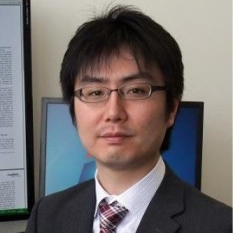Nanoparticles and Their Heterostructures for Pollutant Removal
A special issue of Nanomaterials (ISSN 2079-4991).
Deadline for manuscript submissions: closed (20 February 2021) | Viewed by 4022
Special Issue Editors
Interests: porous nanostructured materials; nanostructured assemblies; non-toxic nanostructures used in water and air depollution processes
Special Issues, Collections and Topics in MDPI journals
Interests: environmental materials; ceramics; photocatalyst; nanosheet; antibacterial materials
Special Issues, Collections and Topics in MDPI journals
Special Issue Information
Dear Colleagues,
Nanotechnology can have a transformative impact on the way we will drive, manipulate, enhance, and monitor environmental pollution by using novel scientific findings and creating new devices based on nanoparticles. Defined by nanoscaled dimensions, nanoparticles own specific properties that can be engineered to create and manipulate their adsorption, catalytic/photocatalytic, and disinfection functionalities. Further, by assembling specific nanoscaled units we can fabricate advanced heterostructures where the ensembled units are able to join their properties for working in concert to improve their competences for environmental cleanup.
This Special Issue aims to compile a selection of original contributions and review articles regarding the applications of nanoparticles and their heterostructures in the environmental remediation. The Issue will cover a wide range of nanoparticles (organic, inorganic, or carbon-based) and their heterostructures (e.g., including but not limited to polymers, metal oxides, clays, and zeolites), not only for removing but also for controlling or for detecting pollutants from water, air, or soil.
Dr. Gabriela Carja
Dr. Ken-ichi Katsumata
Guest Editors
Manuscript Submission Information
Manuscripts should be submitted online at www.mdpi.com by registering and logging in to this website. Once you are registered, click here to go to the submission form. Manuscripts can be submitted until the deadline. All submissions that pass pre-check are peer-reviewed. Accepted papers will be published continuously in the journal (as soon as accepted) and will be listed together on the special issue website. Research articles, review articles as well as short communications are invited. For planned papers, a title and short abstract (about 100 words) can be sent to the Editorial Office for announcement on this website.
Submitted manuscripts should not have been published previously, nor be under consideration for publication elsewhere (except conference proceedings papers). All manuscripts are thoroughly refereed through a single-blind peer-review process. A guide for authors and other relevant information for submission of manuscripts is available on the Instructions for Authors page. Nanomaterials is an international peer-reviewed open access semimonthly journal published by MDPI.
Please visit the Instructions for Authors page before submitting a manuscript. The Article Processing Charge (APC) for publication in this open access journal is 2900 CHF (Swiss Francs). Submitted papers should be well formatted and use good English. Authors may use MDPI's English editing service prior to publication or during author revisions.
Keywords
- nanoparticles
- heterostructures
- pollutant
- environmental cleanup







